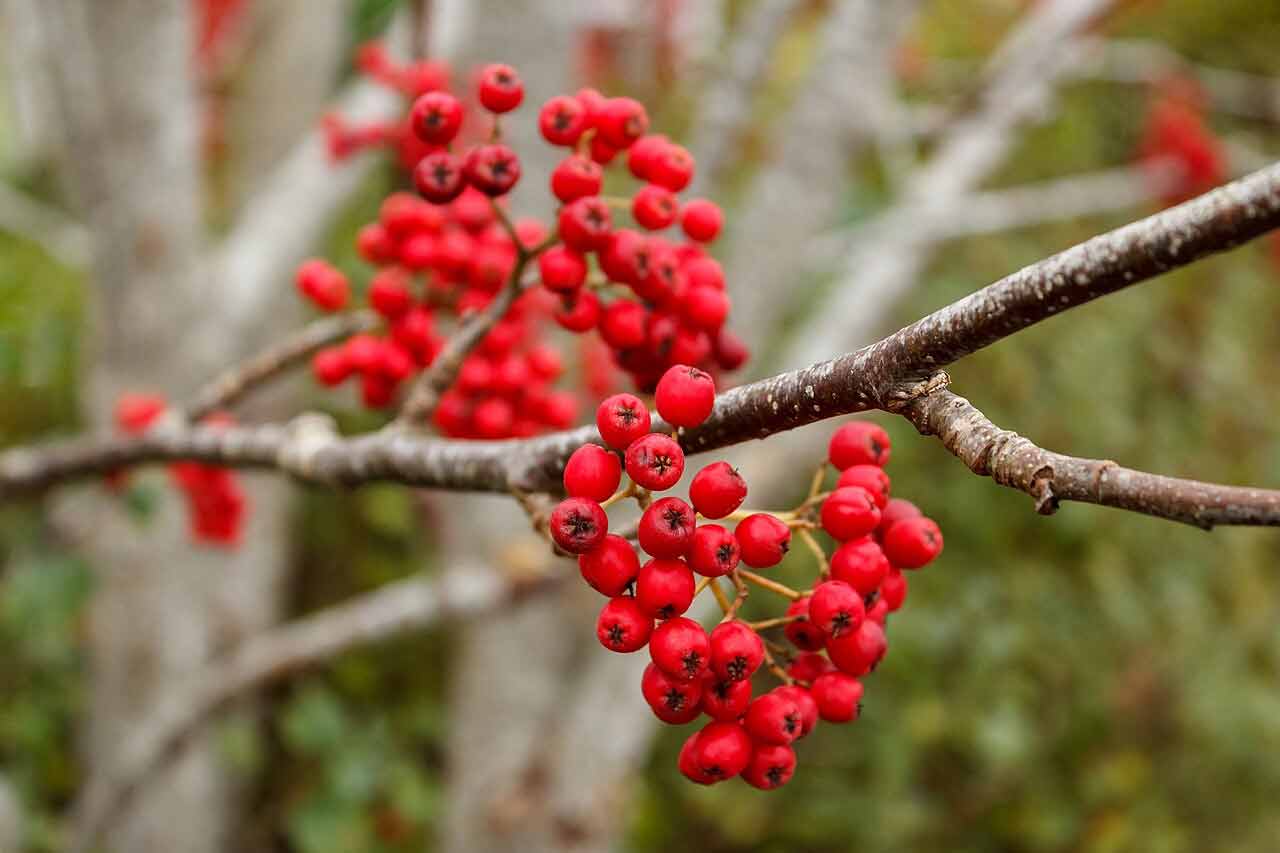The Rowan Tree: A Symbol of Hope and Resilience
The Rowan tree, with its vibrant berries and delicate foliage, has captivated the human imagination for centuries. Native to Europe and Asia, this versatile tree has been revered in folklore, mythology, and herbal medicine. Its symbolic significance and practical uses have made it a cherished part of many cultures.
A Botanical Overview
The Rowan tree, scientifically known as Sorbus aucuparia, is a deciduous tree that typically grows to a height of 20-35 feet. It is characterized by its feathery, compound leaves that turn a fiery orange or red in autumn. In late summer, the tree produces clusters of small, white flowers that are followed by bright red berries. These berries, which are a popular food source for birds, are also used to make jams, jellies, and wine.

Cultural Significance
The Rowan tree has deep cultural significance in many parts of Europe and Asia. In Celtic mythology, it was believed to be a sacred tree that protected against evil spirits. The Rowan tree was also associated with fertility and abundance, and its berries were often used in fertility rituals. In Norse mythology, the Rowan tree was dedicated to Freyja, the goddess of love and fertility.
In Christian symbolism, the Rowan tree is associated with the Cross. According to legend, the wood of the Rowan tree was used to make the True Cross, and the tree has since been regarded as a symbol of hope and redemption. In some regions, it is customary to plant a Rowan tree near the home to ward off evil spirits and bring good fortune.
Medicinal Uses

The Rowan tree has been used for medicinal purposes for centuries. The berries, leaves, and bark of the tree contain a variety of bioactive compounds, including flavonoids, tannins, and organic acids. These compounds have been shown to have antioxidant, anti-inflammatory, and antimicrobial properties.
Traditional healers have used Rowan tree preparations to treat a variety of ailments, including digestive disorders, skin conditions, and respiratory infections. The berries are often used to make jams and jellies, which are believed to have digestive benefits. The leaves and bark have been used to make teas and tinctures that are thought to have astringent and anti-inflammatory properties.
Ecological Importance
The Rowan tree plays an important role in the ecosystem. It provides food and shelter for a variety of wildlife, including birds, insects, and small mammals. The tree is also an important source of nectar and pollen for pollinators such as bees and butterflies.

In addition to its ecological benefits, the Rowan tree is a valuable ornamental tree. Its attractive foliage and bright berries make it a popular choice for gardens and parks. The tree is also relatively hardy and can tolerate a variety of growing conditions.
Conclusion
The Rowan tree is a remarkable plant with a rich cultural heritage and a wide range of practical uses. Its symbolic significance as a tree of hope and resilience has made it a cherished part of many cultures. Whether you are interested in its botanical properties, its cultural history, or its ecological importance, the Rowan tree is a fascinating and inspiring plant to learn about.

:strip_icc()/Star-Jasmine-Bb09HQPpasXBPjzYMW55cV-cae2b5707aa74a3ba328959ad0357284.jpg?w=200&resize=200,112&ssl=1)




